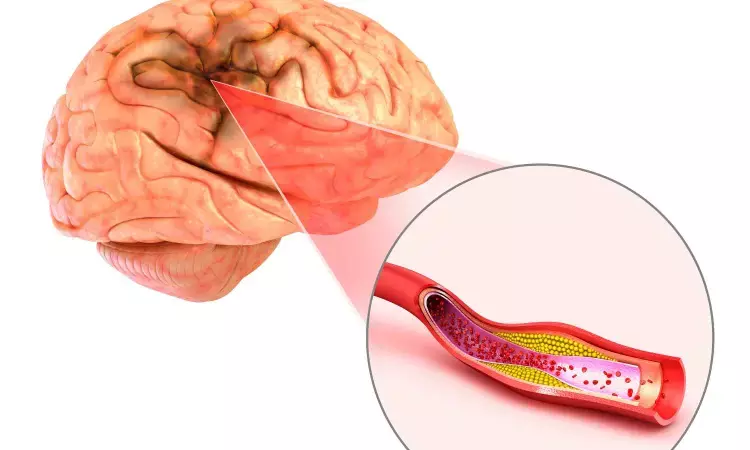- Home
- Medical news & Guidelines
- Anesthesiology
- Cardiology and CTVS
- Critical Care
- Dentistry
- Dermatology
- Diabetes and Endocrinology
- ENT
- Gastroenterology
- Medicine
- Nephrology
- Neurology
- Obstretics-Gynaecology
- Oncology
- Ophthalmology
- Orthopaedics
- Pediatrics-Neonatology
- Psychiatry
- Pulmonology
- Radiology
- Surgery
- Urology
- Laboratory Medicine
- Diet
- Nursing
- Paramedical
- Physiotherapy
- Health news
- Fact Check
- Bone Health Fact Check
- Brain Health Fact Check
- Cancer Related Fact Check
- Child Care Fact Check
- Dental and oral health fact check
- Diabetes and metabolic health fact check
- Diet and Nutrition Fact Check
- Eye and ENT Care Fact Check
- Fitness fact check
- Gut health fact check
- Heart health fact check
- Kidney health fact check
- Medical education fact check
- Men's health fact check
- Respiratory fact check
- Skin and hair care fact check
- Vaccine and Immunization fact check
- Women's health fact check
- AYUSH
- State News
- Andaman and Nicobar Islands
- Andhra Pradesh
- Arunachal Pradesh
- Assam
- Bihar
- Chandigarh
- Chattisgarh
- Dadra and Nagar Haveli
- Daman and Diu
- Delhi
- Goa
- Gujarat
- Haryana
- Himachal Pradesh
- Jammu & Kashmir
- Jharkhand
- Karnataka
- Kerala
- Ladakh
- Lakshadweep
- Madhya Pradesh
- Maharashtra
- Manipur
- Meghalaya
- Mizoram
- Nagaland
- Odisha
- Puducherry
- Punjab
- Rajasthan
- Sikkim
- Tamil Nadu
- Telangana
- Tripura
- Uttar Pradesh
- Uttrakhand
- West Bengal
- Medical Education
- Industry
Prophylactic Lumbar Drainage reduces secondary infarctions and adverse outcomes post aneurysmal subarachnoid hemorrhage

EARLYDRAIN trial revealed that the use of a prophylactic lumbar drain along with the standard of care has alleviated the infarctions at discharge and unfavorable outcomes at 6 months in patients with aneurysmal subarachnoid hemorrhage of any grade. The study results were published in the journal JAMA Neurology.
Subarachnoid hemorrhage that occurs due to a ruptured intracranial aneurysm leads to the development of stroke with increased mortality and morbidity. An aneurysm is generally managed by surgical clipping or endovascular coiling within 24 to 48 hours after hemorrhage. Literature has shown mixed results about the drainage of blood in the basal cisterns. Lumbar drainage was one of the methods which showed favorable outcomes. Hence researchers conducted the EARLYDRAIN trial, which is a pragmatic, multicenter, parallel-group, open-label randomized clinical trial to investigate the effect of a lumbar cerebrospinal fluid drainage among patients with a ruptured cerebral aneurysm between January 2011 and January 2016 and followed-up till July 2016.
The trial was carried out with a blinded endpoint evaluation conducted at 19 centers in Germany, Switzerland, and Canada. Out of the 307 randomizations, there were about 20 invalid randomizations due to a lack of informed consent. All the participants meeting all inclusion and exclusion criteria were included in the intention-to-treat analysis. The exclusion of patients was only performed in a per-protocol sensitivity analysis. A total of 287 adult patients with acute aneurysmal subarachnoid hemorrhage of all clinical grades were analyzable. Aneurysm treatment with clipping or coiling was performed within 48 hours. About 144 patients were randomized to receive an additional lumbar drain after aneurysm treatment and 143 patients to the standard of care only. Early lumbar drainage with 5 mL per hour was started within 72 hours of the subarachnoid hemorrhage. Measuring the rate of an unfavorable outcome, defined as a modified Rankin Scale score of 3 to 6 (range, 0 to 6), obtained by masked assessors 6 months after hemorrhage was the primary outcome.
Key findings:
- Of 287 included patients, 197 (68.6%) were female, and the median (IQR) age was 55 (48-63) years.
- Lumbar drainage started at a median (IQR) of day 2 (1-2) after aneurysmal subarachnoid hemorrhage.
- At 6 months, 47 patients (32.6%) in the lumbar drain group and 64 patients (44.8%) in the standard of care group had an unfavorable neurological outcome.
- Patients treated with a lumbar drain had fewer secondary infarctions at discharge (41 patients [28.5%] vs 57 patients [39.9%]; risk ratio, 0.71).
Thus, Prophylactic lumbar drainage following aneurysmal subarachnoid hemorrhage reduced the risk of poor outcome at 6 months and minimized the burden of subsequent infarction.
Further reading: Wolf S, Mielke D, Barner C, et al. Effectiveness of Lumbar Cerebrospinal Fluid Drain Among Patients With Aneurysmal Subarachnoid Hemorrhage: A Randomized Clinical Trial. JAMA Neurol. Published online June 18, 2023. doi:10.1001/jamaneurol.2023.1792
BDS, MDS
Dr.Niharika Harsha B (BDS,MDS) completed her BDS from Govt Dental College, Hyderabad and MDS from Dr.NTR University of health sciences(Now Kaloji Rao University). She has 4 years of private dental practice and worked for 2 years as Consultant Oral Radiologist at a Dental Imaging Centre in Hyderabad. She worked as Research Assistant and scientific writer in the development of Oral Anti cancer screening device with her seniors. She has a deep intriguing wish in writing highly engaging, captivating and informative medical content for a wider audience. She can be contacted at editorial@medicaldialogues.in.
Dr Kamal Kant Kohli-MBBS, DTCD- a chest specialist with more than 30 years of practice and a flair for writing clinical articles, Dr Kamal Kant Kohli joined Medical Dialogues as a Chief Editor of Medical News. Besides writing articles, as an editor, he proofreads and verifies all the medical content published on Medical Dialogues including those coming from journals, studies,medical conferences,guidelines etc. Email: drkohli@medicaldialogues.in. Contact no. 011-43720751



